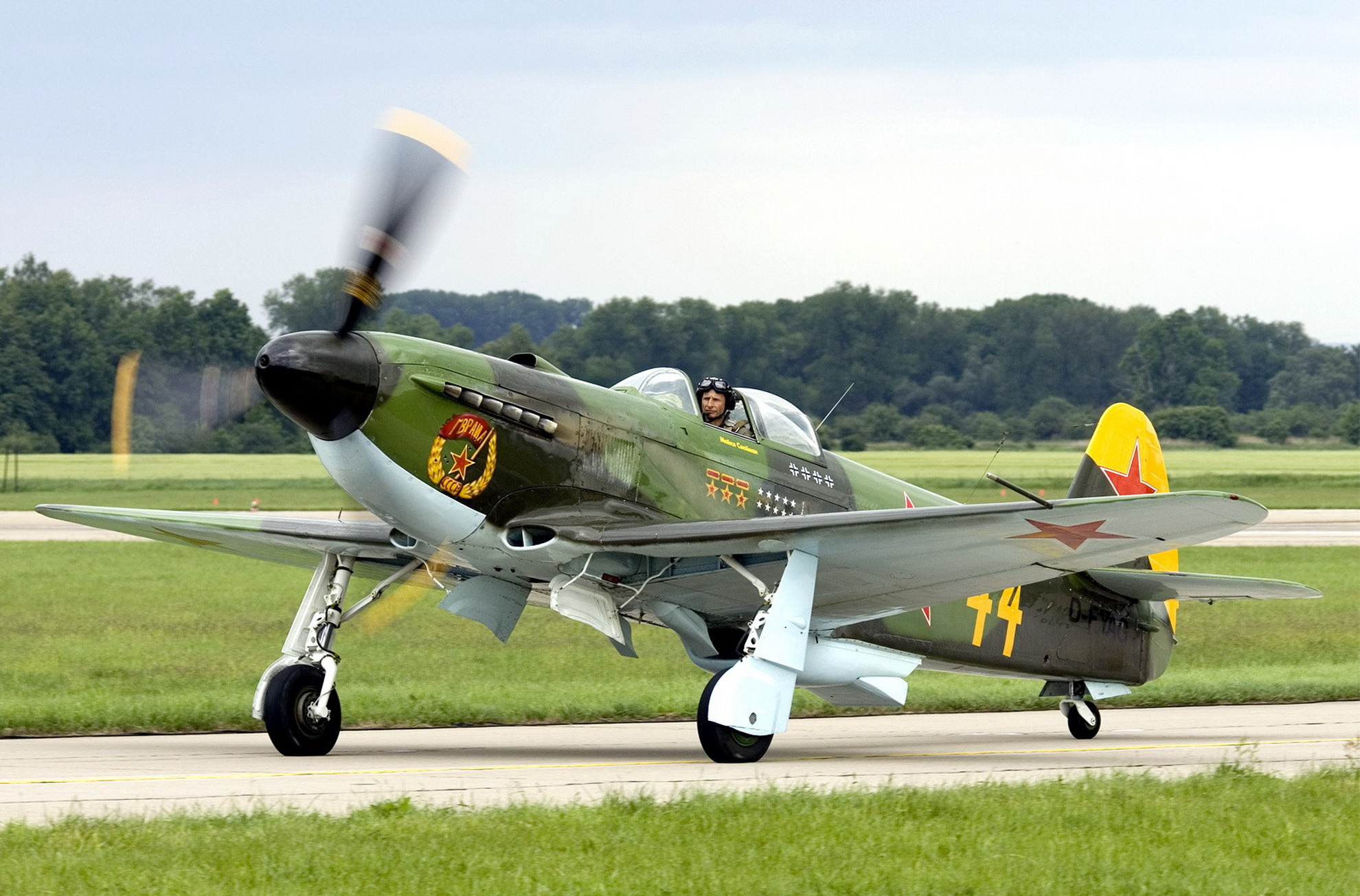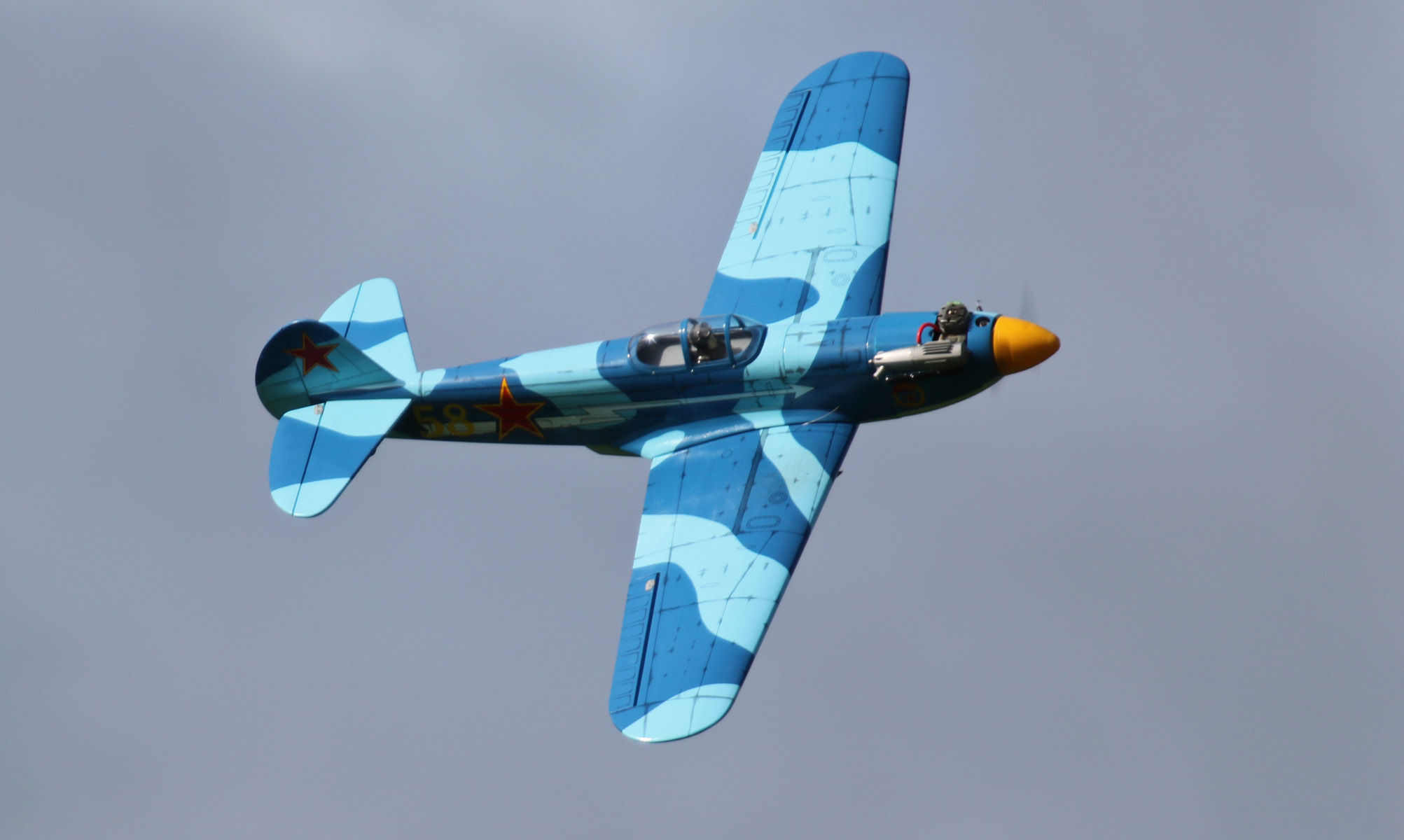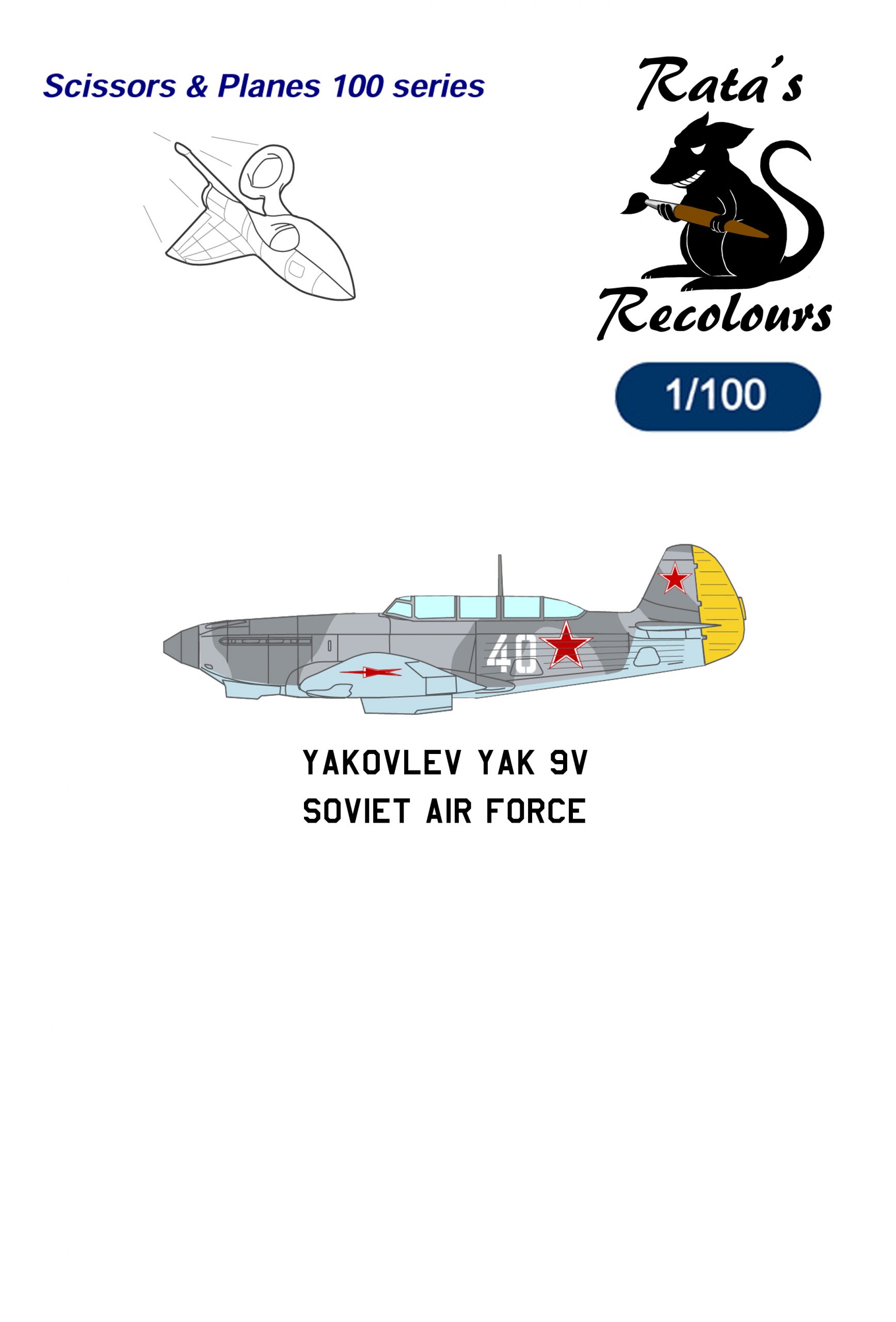Yak Aircraft - Aviation history is full of examples of Siamese twin-fuselage aircraft, from the 1915 Blackburn TB biplane Zeppelin raider to today's White Knight Two and Stratolauncher spacecraft. In the early years, it was an easy way to double the horsepower without designing an entirely new twin. Later it became a means of practically increasing the capacity of crew, fuel or cargo. The most successful of these was the North American F-82 Twin Mustang, but the World War II Heinkel He-111Z—a five-engine, two-fuselage, intended to tow the bloated Messerschmitt Me-321 troop-carrying glider—was also a Sun in the sun.
A bold new mirror image mutant recently joined their ranks when a free-thinking group of air show pilots combined two Yakovlev Yak-55 radial-engine, single-seat aerobatic aircraft to create, cannot be considered a "Yak-110." This required a carefully engineered and fabricated center section uniting the two fuselages, along with the incorporation of horizontal stabilizers and trimming of the outboard horizontal tails. Both cockpits are fully functional and the Yak-110 has been thoroughly tested, including a full range of conventional aerobatic maneuvers.
Yak Aircraft

Now builder Dell Coller, of Dell Aero Speed, in Caldwell, Idaho, is adding a 3,000-pound GE CJ610 turbojet to the plane, which is slung under the center section. Essentially a Lear 25 engine, it would provide the equivalent of about four times more horsepower than the two nine-cylinder Yak-110, 360 hp Vedeneyev radials already developed.
Yak Hunting In Liberia
The first airshow performer to include a CJ610 with a piston engine was Jim Franklin, who in 1996 began flying the Jet Waco UPF-7. That plane, and Franklin, disappeared at an air show in mid-air in 2005. In 2014, Coller's Screamin' Sasquatch Jet Waco, a 1929 Taperwing with a CJ610, was introduced and has since become a fixture at air shows.
The Yak-110 recently appeared at this summer's EAA AirVenture in Oshkosh, Wisc. Like the F-15, F-16 and several other superfighters, it has a thrust-to-weight ratio greater than 1-to-1, allowing for some decidedly unconventional aerobatics. The Yakovlev Yak-3 was the Soviet World War II fighter that helped assert air dominance on the Eastern Front in the final stages of the war. The Yak-3 entered service relatively late in the war, in June 1944, but it quickly became a favorite of both Soviet pilots and ground crews due to its excellent power-to-weight ratio, its handling and ease of maintenance.
The Soviets played a major role in World War II, but in the West we generally know less about their aircraft than the aircraft used by the British, Americans and Germans.
A lot of people can tell you the names of some WWII fighters off the top of their heads, names like the Spitfire, Hurricane, P-51 Mustang, ME 109, Hellcat and Corsair that came out, but I've never heard reliable ones mentioned. Russian yaks.
Yakovlev Yak 18
The Yak family of fighters began with the Yak-1 in 1940, it was designed and built by JSC A.S. Yakovlev Design Bureau - often referred to as "Yakovlev." The Yak-1 suffered many quality control problems, more than 10,000 changes were made to the drawings during its four years of production. Many aircraft have been lost due to structural failure – plywood wings in particular have a nasty habit of delaminating at inopportune moments along the way.
The Yak-3 was quite similar in appearance to the older Yak-1, but the new aircraft was greatly improved in every conceivable way and was able to immediately compete with German aircraft on the Eastern Front.
Needless to say the Germans were surprised by this new aircraft and the Luftwaffe lost so many aircraft that they issued

A number of different variants of the Yak-3 were developed, with different weapons, engines and other specifications. Most examples of the aircraft were powered by the Klimov M-105PF2, a liquid-cooled V12 aircraft engine, versions of which were used extensively in Soviet aircraft during the war.
Yakovlev Yak 130 Mitten Advanced Jet Trainer And Light Combat Aircraft
The engine is said to draw heavily on the experience of the designer at Hispano-Suiza, but there are some notable differences, including the use of a counterbalanced crankshaft and two intake valves per cylinder.
Modified versions of this engine were able to accommodate a cannon that fired through the propeller shaft and directly out of the nose cone of the aircraft. The PF2 variant used in most Yak-3s was capable of 1,360 hp, compared to similar engines from other WWII fighters.
By the end of production in 1946, almost 5,000 examples of the Yak-3 had been built, however, very few have survived to the present day, and fewer are still in airworthy condition.
The aircraft you see here is a 1945 Yak-3 with some modifications to improve it and keep it airworthy.
File:yakovlev Yak 3 'full Noise' Flying After Takeoff.jpg
The original engine was replaced by an Allison V-1710 V12, this is an American World War II V12 aero engine used in a wide range of American aircraft including the Boeing XB-38 Flying Fortress, Curtiss P-40 Warhawk, Lockheed P -38 Lightning , the North American F-82 Twin Mustang and many others.
Allison parts are easier to come by and there are plenty of engineers around to work on them, this particular engine received a major overhaul of Vintage V-12s and has only accumulated 10 flight hours since then.
Cessna 400 Series wheels and brakes replace the original, and it now uses Hamilton Standard 23E50 propeller blades, Garmin avionics, and hydraulic toe brakes.

The aircraft is currently based in California and is offered for sale through Platinum Fighter Sales for $395,000 USD. If you want to read more about it or inquire about buying it, click here to visit the listing.
Yak Aircraft History Performance And Specifications
Ben's articles have been covered in CNN, Popular Mechanics, Smithsonian Magazine, Road & Track Magazine, the Official Pinterest Blog, the Official eBay Motors Blog, BuzzFeed, Autoweek Magazine, Wired Magazine, Autoblog, Gear Patrol, Jalopnik, The Verge and much more .
Was founded by Ben in 2010, in the years since the site has grown to become a world leader in the alternative and vintage car sector, with over a million monthly readers from around the world and many hundreds of thousands of social media followers. The Yakovlev Yak-11 (Russian: Яковлев Як-11; NATO reporting name: "Moose") was a trainer aircraft used by the Soviet Air Force and other Soviet-influenced air forces from 1947 to 1962.
The Yakovlev design bureau began work on an advanced trainer based on the Yak-3 fighter in mid-1944, although the trainer was a low priority due to the ongoing World War II.
The first prototype of the new trainer, designated Yak-UTI or Yak-3UTI, flew in late 1945. It was based on the radial-powered Yak-3U, but with a new Shvetsov ASh-21 sev-cylinder radial replacing the ASh -82 of the Yak-3U.
Yakovlev Yak 52 Russian Airplane Editorial Stock Photo
It used the same all-metal wing as the Yak-3U, with a fuselage of mixed metal and wood construction. The pilot and observer sit side by side under a long canopy with separate sliding hoods. A synchronized UBS 12.7 mm machine gun and wing racks for two 100 kg (220 lb) bombs make up the aircraft's armament.
An improved prototype flew in 1946, with modified cockpits and a modified gin installation with the gin mounted on shock mounts.
This aircraft passed government testing in October 1946, with production starting at factories in Saratov and Lingrad in 1947.

Production Yak-11s were heavier than the prototypes, with later batches fitted with non-retractable tailwheels and revised propellers. A 7.62 mm ShKAS machine gun was sometimes fitted in place of the UBS, while some were fitted with a periscope for rear view over the windscreen.
Yak 52 Tw For Sale
Soviet production reached 3,859 aircraft between 1947 and 1955. With a further 707 lics built by Let in Czechoslovakia as the C-11.
In 1951, Yakovlev modified the Yak-11 design, adding retractable tricycle landing gear, with two variants proposed, the Yak-11U basic trainer and the Yak-11T skill trainer, which carry similar equipment in modern jet fighters. The new aircraft had reduced fuel capacity and was unsuitable for operations on rough or snowy runways, and was thus rejected for Soviet service, although some examples were built in Czechoslovakia as the C-11U.
The Yak-11 entered service in 1947, serving as the standard advanced trainer with the Soviet Air Forces and DOSAAF.
Both the Yak-11 and C-11 were used by all Warsaw Pact countries and were exported to eight countries, including many countries in Africa, the Middle East and Asia.
Yakovlev Yak 52 For Sale
North Korean Yak-11s were used in combat in the Korean War, where a Yak-11 was the first North Korean aircraft shot down by US forces before being destroyed by a North American F-82 Twin Mustang over Kimpo Airfield on 27 June 1950.
Due to its Yak-3 lineage, the Yak-11 enjoys great popularity among warbirds of this type. Highly modified versions of the Yak-11 are often seen in air races. Around 120 Yak-11s are still airworthy. This article requires multiple citations for verification. Help improve this article by adding citations to reliable sources. Unsourced material may be challenged and removed. Find Resources: "Yakovlev Yak-52" – News · Newspapers · Books · Scholarship · JSTOR (March 2009) (Find out how and where to remove this template message)
The Yakovlev Yak-52 (Russian: Яковлев Як-52) is a Soviet primary trainer aircraft that first flew in 1976. It was manufactured in

Yak trainer aircraft, yak 52 aircraft, yak 3 aircraft, yak 40 aircraft, yak 54 aircraft, yak aircraft corporation, yak aircraft for sale, yak 42 aircraft, yak 50 aircraft, yak 152 aircraft, yak aerobatic aircraft, yak aircraft ww2
0 Comments